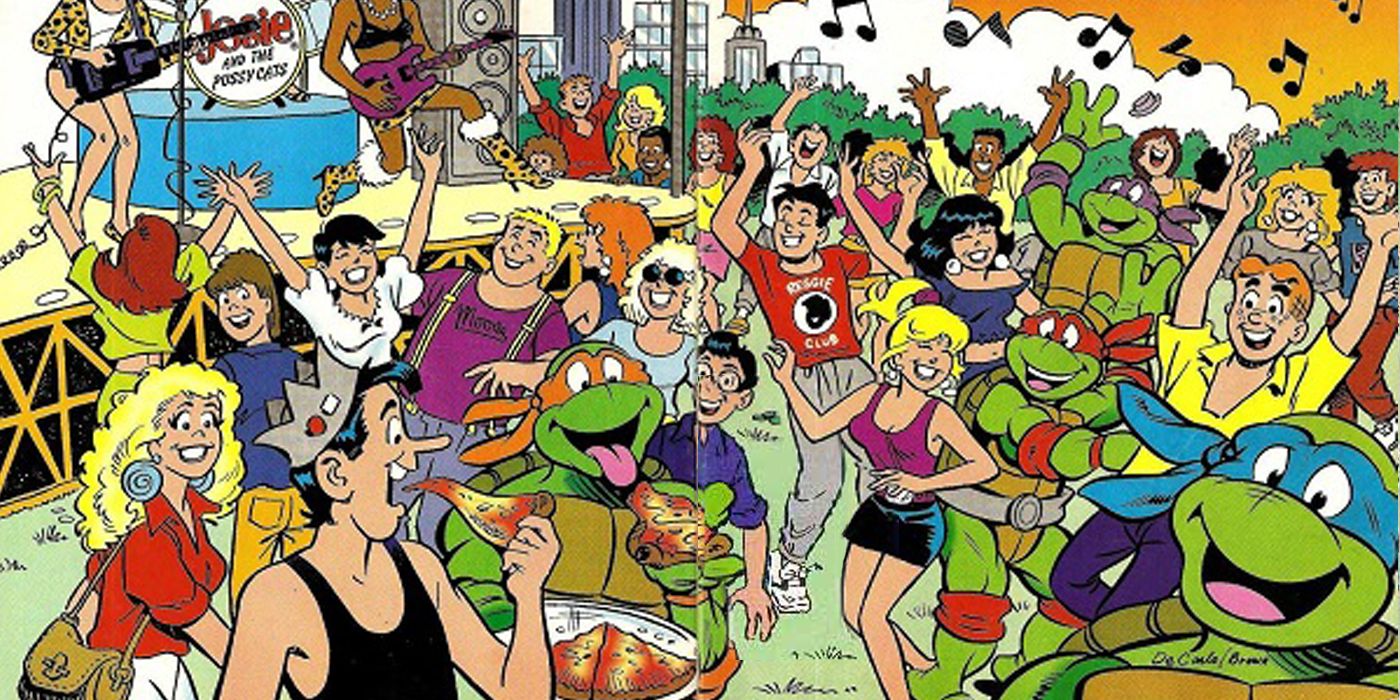The multiverse has become a core plot element in many of the stories currently coming out of publishers like Marvel and DC, but hidden in all the attention being paid to new multiverse stars like Spider-Man, Batman, or Dr. Strange is the groundwork other comic characters, such as the Teenage Mutant Ninja Turtles, have done to help popularize the idea. The concept of a multiverse is, for comics, an amazing tool. On the one hand, it gives creators an unlimited source of content possibilities to draw from. On the other hand, it helps keeps old fans interested, while continuously attracting new followers.
Despite the alt-reality that underpins the idea of a multiverse, Marvel and DC have largely walled their respective universes from one another. However, the creative minds behind the Teenage Mutant Ninja Turtles have embraced the advantages that an inter-universe crossover can provide and the stories that can come from such events. Indeed, over the years, the Turtles have appeared in at least eight different universes.
For much of their history, the Turtles could be found in their original universe created by Kevin Eastman and Michael Laird. This is the universe in which the turtles were the primary heroes, and their main nemeses were Shredder and his Foot Clan. It was here that the turtles started their multiversal adventures beginning with 1984’s TMNT #8, where the turtles crossed over into the universe of Cerebus the Aardvark. They made a second crossover in the 1987 one-shot Turtle Soup #1, which marked the first of many collaborations with Stan Sakai’s Usagi Yojimbo. There was also the 1993 four-part miniseries with Dark Horse Comics hero Flaming Carrot.

For a while, the turtles were full-time inhabitants of the Archie Comics universe. Their time in that canon led to several interesting crossovers, including the 1991 special Teenage Ninja Mutant Turtles Meet Archie, as well as a one-page comic strip in which Garfield the Cat visits the turtles in their sewer lair. After their time in the Archie universe, the turtles headed to the Image Comics universe for a short time. There, besides experiencing several significant changes, such as Master Splinter becoming a bat, they also appeared with Eric Larsen’s Savage Dragon in TMNT #10. Eventually, the turtles returned to the Mirage universe for a while before eventually moving into the IDW universe where they have remained ever since. Their return to Mirage, however, did not stop the crossovers. There were more crossovers with Usagi Yojimbo, which was now being published by Dark Horse Comics. There were also several crossovers into the world of manga such as the 1995 Super Turtles # 1: Seinaru Myuta-seki no Nazo.
At IDW, the tradition of turtle crossovers has continued with a range of internal collaborations such as the 2017 crossover with IDW’s Ghostbusters comic book. There have also been external crossovers including the multi-volume mini-series with DC Comics’ Batman, and the 2019 Boom Studios crossover between the turtles and the Mighty Morphin’ Power Rangers. To truly illustrate the extent of their multiversity, the turtles have even collaborated with properties like The X-Files.
To be sure, the Turtles have crossed over to or collaborated with a substantial chunk of the comic omniverse. And that’s what makes the Teenage Mutant Ninja Turtles the best multiversal heroes in comics.




